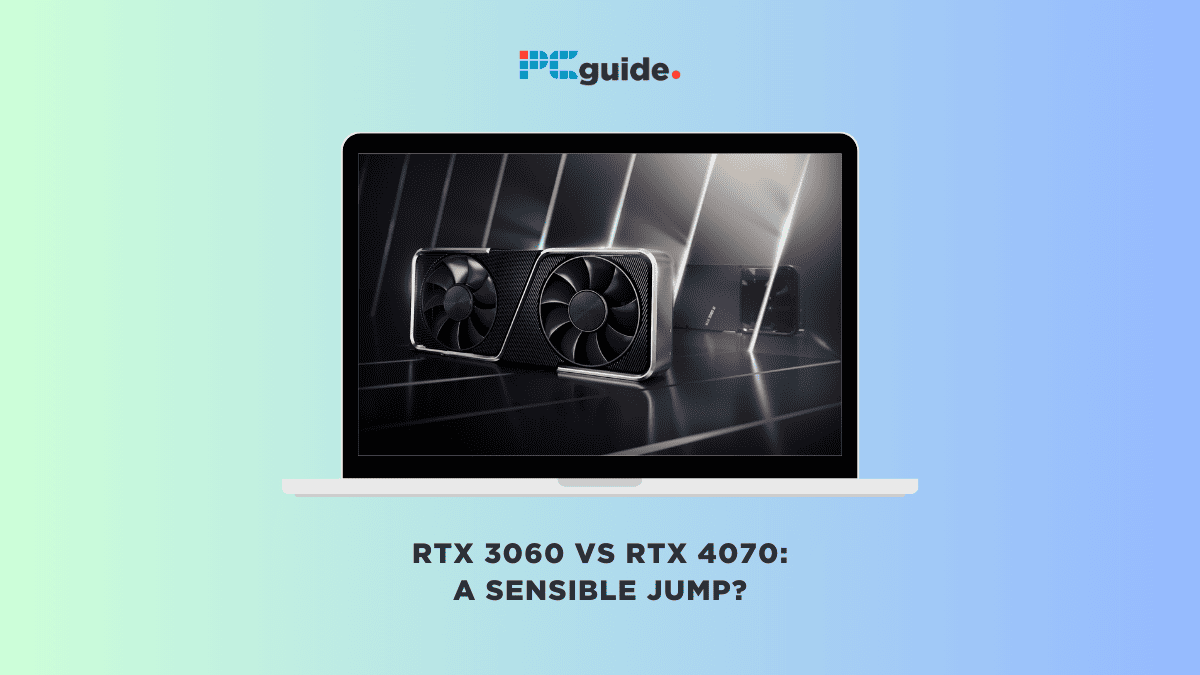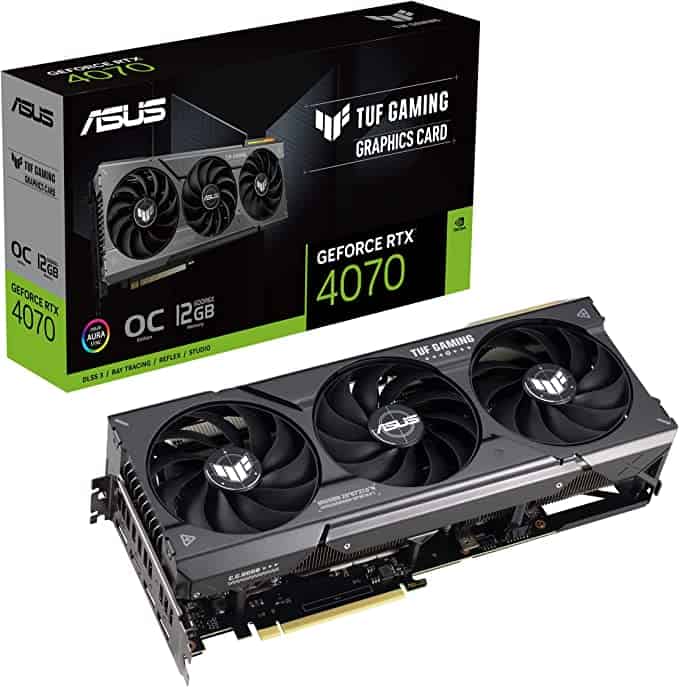RTX 3060 vs RTX 4070 – a sensible jump?

Table of Contents
The battle of the Nvidia GeForce RTX 3060 vs. RTX 4070 is a testament to the rapid evolution of gaming graphics, marking a significant transition between generations of graphics cards. Nvidia’s launch of its 40-series, including the RTX 4090, RTX 4080, and the latest RTX 4070, has set new benchmarks for what gamers and tech enthusiasts can expect. This article will dive into the comparison between these two titans—the RTX 3060 and the RTX 4070—providing a comprehensive understanding of the performance leaps and the technological enhancements that define Nvidia’s progressive hardware lineup.
RTX 3060 vs. RTX 4070: Specs comparison
In the high-stakes showdown between the RTX 3060 and RTX 4070, a specs comparison is crucial for gamers and PC enthusiasts considering an upgrade. The architectural leap from the 8nm Ampere to the 5nm Lovelace is just the beginning of the RTX 4070’s advances, delivering a more sophisticated foundation for improved performance.
| Specs | RTX 3060 | RTX 4070 |
|---|---|---|
| Architecture | Ampere (8nm) | Lovelace (5nm) |
| Video memory | 12 GB | 12 GB |
| Power consumption | 170 W | 200 W |
| RT cores | 2nd Gen | 3rd Gen |
| Base clock | 1,320 MHz | 1,920 MHz |
| Stream processors/CUDA cores | 3,584 | 5,888 |
| Tensor cores | 3rd Gen | 4th Gen |
| VRAM | GDDR6 12GB/8GB | GDDR6X 12 GB |
| TFLOPS | 12.74 | 29.15 |
| GPixel/s | 113.7 GPixel/s | 158.4 GPixel/s |
| Memory clock speed | 15,000 MHz | 21,000 MHz |
| Memory bandwidth | 360 GB/s | 504.2 GB/s |
| Turbo speed | 1780 MHz | 2480 MHz |
| Maximum selling price | $329 | $599 |
The RTX 3060’s 2nd gen RT cores and 3rd gen Tensor cores were a formidable combination, but the RTX 4070’s upgrade to 3rd-generation RT cores and 4th-generation Tensor cores elevates ray tracing performance to new heights. With a 600MHz edge in GPU clock speed over the RTX 3060, the RTX 4070 is engineered to handle demanding frames with ease, translating to smoother fps rates in graphically intensive games like Cyberpunk.
Clock speed
Moreover, the RTX 4070’s memory clock speed is a staggering 21,000 MHz, leaving the RTX 3060’s 15,000 MHz far behind, which is a pivotal factor in the frame generation and overall fluidity of on-screen action. This speed indicates that the RTX 4070 is not just faster, but can handle more complex textures and larger frames more efficiently.
The TFLOPS comparison is stark; the RTX 4070’s 29.15 TFLOPS significantly outpaces the 12.74 TFLOPS of the RTX 3060, suggesting a robust increase in computational power that gamers and professionals alike will appreciate. This leap is also reflected in memory bandwidth, with the RTX 4070 offering an additional 144.2 GB/s, which means data travels faster, reducing bottlenecks for high-resolution textures and complex 3D models.
Connectivity
When it comes to connectivity, both cards maintain a strong lineup with HDMI and DisplayPort interfaces, ensuring compatibility with a wide range of displays and multimedia setups. The RTX 4070’s higher GPU turbo speed by 700 MHz compared to the RTX 3060, coupled with an increase of 2,304 more shading units (CUDA cores), means that it can render images more rapidly and efficiently, a key factor for achieving higher frame rates.
Despite these enhancements, the RTX 3060 does have a lower TDP at 170 watts, suggesting better energy efficiency than the RTX 4070’s 200 watts. This could be a consideration for users who prioritize power consumption over peak performance.
In the feature department, the playing field levels with both cards supporting DirectX 12, OpenGL version 4.6, multi-display technology, ray tracing, DLSS, and more, ensuring that regardless of your choice, modern gaming features are at your disposal.
RTX 3060 vs. RTX 4070: Performance comparison
RTX 4070 does look good on the paper when we compare the specifications of both. But what about the actual performance? Is RTX 4070 any good in terms of performance? Yes, it is. In fact, it is estimated to have a 104.2% better performance score.
The performance score for RTX 3060 is 8,739, but the same for RTX 4070 is 17,846. This means more cores, better architecture, and faster speed, all show up in the performance scores.
RTX 3060 vs. RTX 4070: Pricing
When it comes to the financial aspect of the RTX 3060 vs. RTX 4070 debate, the numbers are quite telling. The RTX 3060, with its MSRP of $329, represents a more budget-friendly entry point for gamers looking to enjoy solid performance without breaking the bank. It’s a price tag that aligns well with the needs of those who want to game at high settings without the need for the absolute latest tech.
On the flip side, the RTX 4070 climbs the price ladder to a heftier $599. This jump is not insignificant, but it's justified by the leaps in architecture and performance capabilities that it brings to the table. For those considering where to invest their money, the RTX 4070 could be considered a purchase that's future-proofing their gaming or creative endeavors, offering headroom for emerging technologies and demanding applications.
The availability of these GPUs also plays a crucial role in their pricing dynamics. Market conditions can lead to price fluctuations, so for those with an eye on the RTX 3060 or RTX 4070. It is wise to monitor for potential deals or stock updates that could bring these cards closer to their MSRP, choosing to upgrade a more manageable one.
Conclusion
The decision to upgrade from an RTX 3060 to an RTX 4070, or any other higher-tier GPU, depends on your specific needs and budget. If you’re satisfied with the performance of your RTX 3060, it may not be necessary to upgrade immediately.
However, if you’re seeking better performance for higher resolutions, ray tracing, or demanding tasks, the RTX 4070, with its improved specifications and performance, might be a sensible jump, provided it aligns with your budget.

